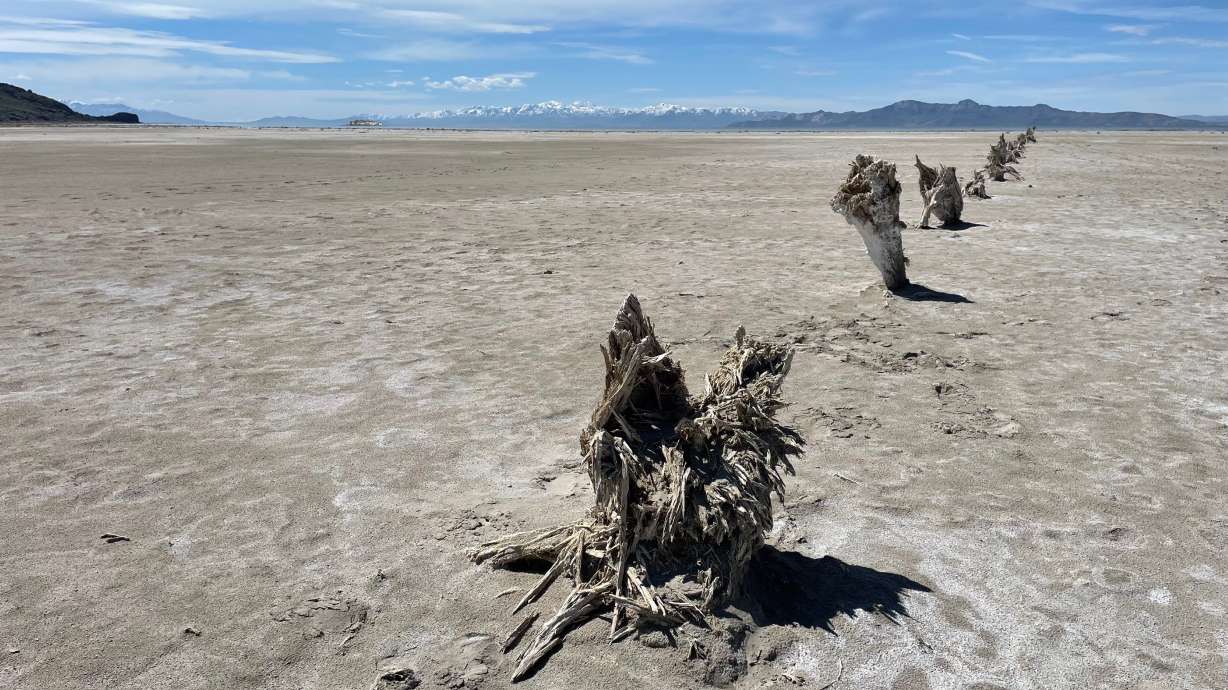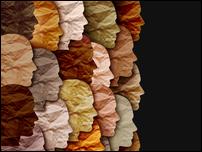Estimated read time: 4-5 minutes
This archived news story is available only for your personal, non-commercial use. Information in the story may be outdated or superseded by additional information. Reading or replaying the story in its archived form does not constitute a republication of the story.
SALT LAKE CITY — People of color potentially face increased exposure to fine dust blown from the drying bed of the Great Salt Lake compared to white people, putting them at higher risk of experiencing the ill effects of flying particulate matter, a new University of Utah study warns.
"This is likely because Salt Lake City's lower-income neighborhoods are more likely to lie in the path of windblown dust from the Great Salt Lake," reads a summation of the report prepared by the U. The lake has shrunk significantly due to drought, upstream diversion of water from rivers that feed it and other factors, leaving some 800 square miles of exposed lakebed.
Pacific Islanders, in particular, are at risk of heightened exposure to blowing lakebed dust due to their "marginalization" to the area of northwestern Salt Lake County abutting the Great Salt Lake, the report reads. "This happened as more powerful white settlers excluded them from desirable eastern Salt Lake Valley locations with fresh water streams and arable land adjacent to the Wasatch Mountains," according to the report.
However, the data in the report shows that Hispanic, Black, Native American and Asian people also potentially face exposure to higher concentrations of lakebed dust compared to their white counterparts. The study looked at the potential impact of blowing dust in Weber, Davis and Salt Lake counties, highly populated counties that abut the eastern side of the lake.
"Broader processes connected to racism and economic disadvantage tend to shape how cities develop and where groups of people tend to live. More privileged people are better able to access environments with more amenities, such (as) living close to the Wasatch Mountains, where the dust levels are predicted to be lower," Sara Grineski, a professor of sociology and environmental studies at the U., said in a message to KSL.com. Grineski leads the team of U. faculty, most of whom are affiliated with the U.'s Wilkes Center for Climate Science and Policy, that prepared the report.
The new study, published on June 21 in One Earth, notes that other studies have also shown that racial and ethnic minorities in Salt Lake County face "disparate exposure" to PM2.5 (fine particulate matter measuring 2.5 micrometers or less), during short-term winter inversion episodes. The U.S. Environmental Protection Agency says "a growing body of science" links particle pollution, when it penetrates deep into the lungs, "to asthma attacks, missed days of school or work, heart attacks, expensive emergency room visits and premature death."
The new U. study tapped U.S. Census Bureau data to map the distribution of residents by race and ethnicity in the three Wasatch Front counties. "We simulated dust emissions and transport for all wind-blown dust events identified during the spring of 2022," it reads, noting "significant" wind episodes on April 19-21 and May 7 that year. Beyond that, the study also simulated dust emissions and distribution under four scenarios — with no lake, a "very low" lake, the current lake water level and a "healthy" lake.
Predicted exposure to PM2.5 was highest under the no lake scenario, with a completely exposed lakebed, and lowest under the healthy lake scenario. Likewise, though racial and ethnic minorities potentially face heightened exposure under each of the four scenarios, the difference diminishes with more water in the lake.
Under the no lake scenario, Pacific Islanders face exposure during wind episodes of 36.4 micrograms of PM2.5 per cubic meter of air compared to 34.33 micrograms for Hispanics, 33.68 micrograms for Black people, 33.38 micrograms for Native Americans, 33.36 micrograms for Asians and 31.19 micrograms for white people.
Under the healthy lake scenario, Pacific Islanders face exposure during wind episodes of 25.64 micrograms of PM2.5 per cubic meter of air. That compares to 24.94 micrograms for Hispanics, 24.92 micrograms for Black people, 24.8 micrograms for Native Americans, 24.47 micrograms for Asians and 23.74 micrograms for white people.
Read more:
Given such data, the study notes the benefit of maintaining and even increasing the water level in the Great Salt Lake, the aim of a number of conservation measures focused on the lake. More water would reduce dust emissions for everyone and temper disparities in dust exposure based on race and ethnicity. "In this context, halting the lake from drying up would protect ecological and human health while promoting environmental justice," it reads.
The study also looked at the potential impact of windblown dust based on education level, mapping where people live based on educational attainment and the expected trajectory of emissions. Under the no lake scenario, the study found that those without a high school diploma potentially face exposure of 34.17 micrograms of PM2.5 per cubic meter of air compared to 31.72 micrograms for those with at least a high school diploma.











